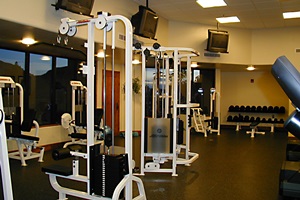Building a Better Workout: Muscle Confusion 101
Whether you train seriously or have a more casual interest in personal fitness, you’ve probably heard the term “muscle confusion” at some point. Muscle confusion has been strongly associated with several at-home workout programs over the past few years (P90X is probably the best known), but the underlying training principle is much more than just marketing. In fact, it’s been producing results in one form or the other since it was introduced in the 1970s.
While there’s been a lot of debate—and, yes, confusion—in the fitness world about the general concept, much of it has to do with exactly how the term is defined and the best techniques for actually applying the idea. There’s very little meaningful disagreement about why muscles need to be challenged in different ways in order for them to continue to develop.
Over time, muscles stop responding to the same workouts with the same improvements. This is because muscles naturally adapt if they perform the same types of exercises, with the same amount of resistance, for the same number of repetitions, on the same days, week after week. At some point, they simply no longer have to grow in size or strength to accomplish what’s expected of them. This is known as a workout plateau.
The goal of muscle confusion is to take the “routine” out of a workout routine by challenging the muscles in a variety of ways that encourage them to continue adapting. This is one way to avoid or minimize plateaus. Muscle confusion falls into a category of workout techniques known as periodization and more specifically, non-linear periodization. This technique changes each week’s workout sessions to focus on different muscle properties in order to achieve specific gains in size, power and stamina. These changes also tend to burn more calories, which aids in weight loss and weight management.
Muscle confusion workouts typically use traditional strength-training exercises such as the bench press, lat pull-down, biceps curl, triceps extension, leg press, leg curl and leg extension. However, these workouts “mix them up” in at least three important ways:
- Varying the amount of resistance from heavy to light
- Changing the number of repetitions in each set
- Altering the speed or pace at which the exercises are performed
A simplified example of a muscle confusion workout program might include one day a week of heavy lifting with one to four repetitions per set. The next workout day, a medium resistance might be lifted at a faster speed with one to four repetitions. The third workout day of the week, a lighter resistance might be lifted between six and 10 times starting out at a faster pace and slowing as muscle fatigue sets in.
In addition to changing the amount of weight, number of repetitions and speed involved in performing individual exercises, some experienced trainers increase the amount of muscle confusion even further by changing the order of the exercises themselves and varying the amount of time between sets. The change in exercise sequence can be used to pre-fatigue certain muscles (for instance, by performing the triceps extension before the larger-muscle-group bench press), while a reduction in time between sets (perhaps from two minutes to 30 seconds) can be used to accelerate the break-down in muscle tissue that stimulates repair and growth. Of course, no matter which muscle confusion variations are used, the usual precautions about warming up, exercising through a full range of motion and cooling down properly all still apply. And it’s always important to allow enough time between workouts for muscles to recover.
Beyond athletic performance and looking better in a swimsuit, there are lots of good reasons to consider a weight training program. Strong, healthy muscles help to support your frame, reduce wear-and-tear on your joints and keep the body in proper alignment. Plus, researchers have discovered that building lean muscle mass can increase metabolism, which helps with weight loss and weight maintenance since muscles use more calories to sustain themselves. They’ve also found that building more muscle mass (and bone mass) throughout your early adulthood and middle-age years may translate into a lower risk of disability and a healthier, more active lifestyle in your 60s and beyond.
A well-designed weight training program—perhaps built with ideas like muscle confusion in mind—can have many benefits that last a lifetime. But remember to talk with your chiropractic physician or other healthcare provider before you begin any new fitness program, especially if you haven’t been active in a while, are recovering from an injury or illness or suspect you may have health problems. As experts in helping patients recover, maintain and improve their musculoskeletal health, we can work with you to develop a well-rounded program that achieves your goals while reducing the risk of injury. Just call or visit the office today to learn more!









